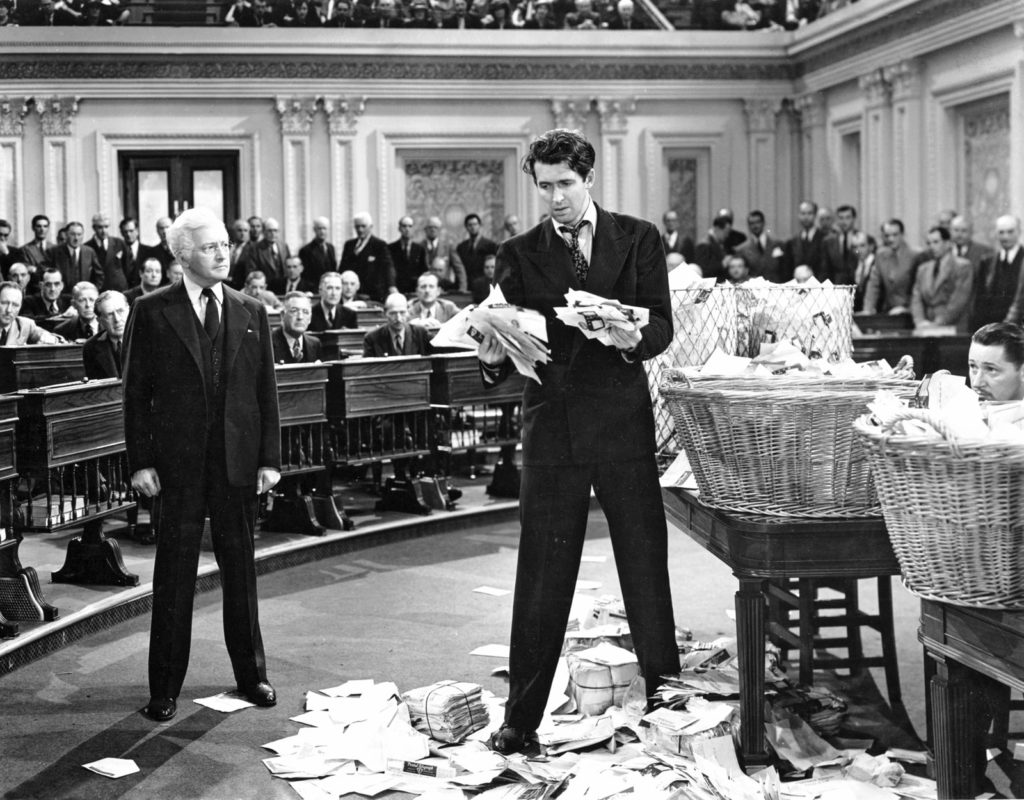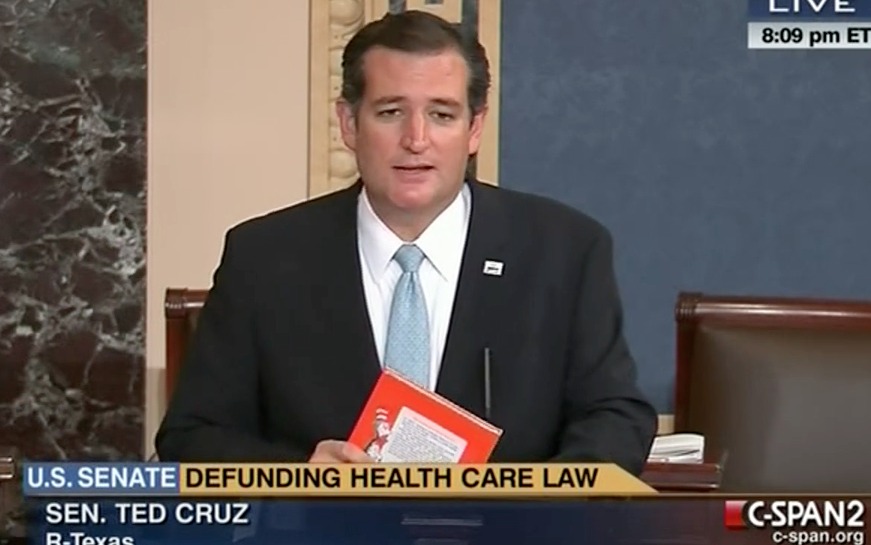If you’ve ever seen the 1939 classic “Mr. Smith Goes to Washington,” you may remember title character Jefferson Smith, played by James Stewart, launching into a marathon 24-hour filibuster in order to halt a corrupt appropriations bill (clip embedded at end of post).
It’s a great film and resource for understanding “how the sausage gets made” in the Senate and an entertaining depiction of the filibuster, which continues to play an important role in politics to this day.
With Congress back in session, you’ll be hearing a lot about filibusters and the “nuclear option”. This is a great time to pull out The Policy Circle’s Senate Brief and brush up on filibusters and the ins and outs of this procedure unique to the Senate.
How do filibusters work and why are they used? Read on to find out.
What is a Filibuster?
A filibuster is a delaying tactic used to extend debate by introducing extraneous or unrelated issues to a piece of legislation, an appointment, or another issue that the Senate is debating. Simply put, a filibuster prevents the Senate from coming to a final vote on the bill, resolution, or other measure at hand.
There is ongoing debate over the importance of the filibuster. One side argues it is not needed because our Founding Fathers structured the Senate in such a way that the minority view is protected. Others disagree, saying the filibuster is required to protect the minority.
Former Senator Phil Gramm writing in an AEI newsletter and Wall Street Journal article gives a great historical overview of the filibuster and discusses how the Framers of the Constitution created the Senate as a cooling body. He notes that President Washington explained the role of the Senate to Thomas Jefferson that as one pours tea into a saucer to let it cool, “we pour legislation into the Senatorial saucer to cool it.”
Increasing Use of the Filibuster
While filibuster has been used 1,300 times since 1917, 600 filibusters occurred in the last 12 years. In 2013 Senator Ted Cruz famously held forth on defunding Obamacare, in a 21-hour filibuster, during which he read “Green Eggs and Ham” to his daughters from the Senate floor. He was unsuccessful in stopping a vote to continue debate on a bill he opposed.
The “Nuclear Option”
In 2013, the Senate by a vote of 52 for and 48 against, changed its rules on filibusters, allowing 51 votes to end debate on executive branch nominees and judicial nominees other than to the Supreme Court. This was referred to as the “nuclear option” as it blew up a long-standing Senate rule. This means that it will be more difficult for Senate Democrats to block Trump’s Cabinet nominations, which as Kimberly Strassel wrote in the WSJ has Democrats “regretting” introducing the nuclear option.
However, for Supreme Court nominees, 60 votes are still required to end debate about a nominee, and then a majority can confirm. As Forbes reports in its November “Beltway Brief,” Democrats may try to “thwart Trump’s judicial agenda.”
So, as counterintuitive as it might seem, the filibuster process allows one senator to prolong debate and delay the vote on a bill. The delay is intended to allow Senators the time to revisit and possibly revise their positions. Senators are not cowboys; they don’t shoot from the hip.
The debate will rage on. What do you think about the filibuster? Is it part of the “cooling process” or a necessary instrument for protecting the minority? Or does it just contribute to gridlock in Washington? Share your thoughts in the comments section below.
It’s a movement!
Recommend a Circle Leader. Circles are starting in DC, Wisconsin, Minnesota, Arizona, Nebraska, Missouri, Texas, and New York.
Start a Circle in your neighborhood. Add value in your community by giving women the facts and the space to strengthen their understanding of the issues.
Invest in The Policy Circle. Together let’s build a network of women who want to assume their civic duties and understand the impact of policy in their lives.
The Policy Circle is a 501(c)3 that provides a fact-based, nonpartisan framework that inspires women living in the same community to connect, learn about and discuss public policies that impact their lives. Women across the nation are taking a leadership role in public policy dialogue on what human creativity can accomplish in a free market economy.

